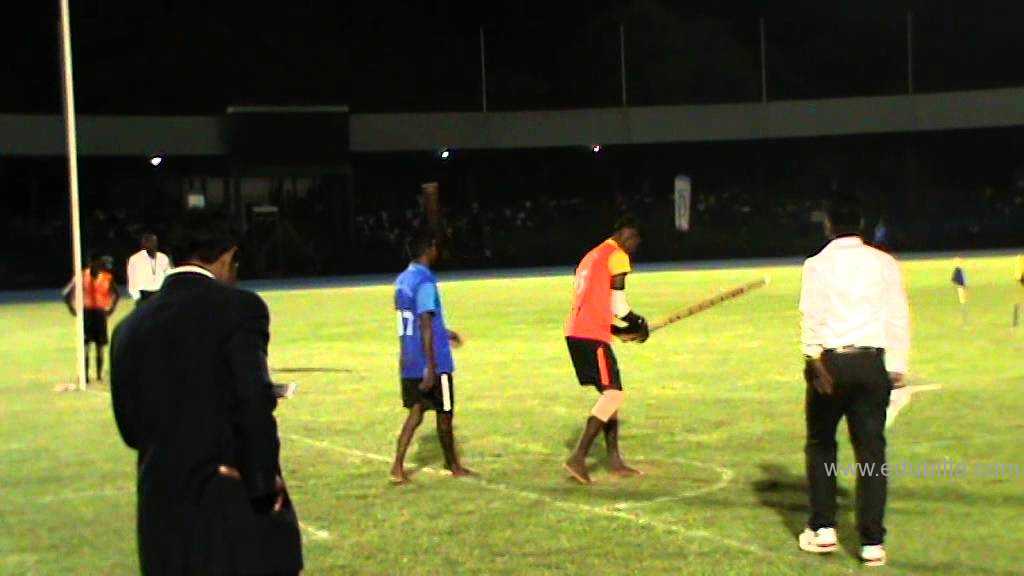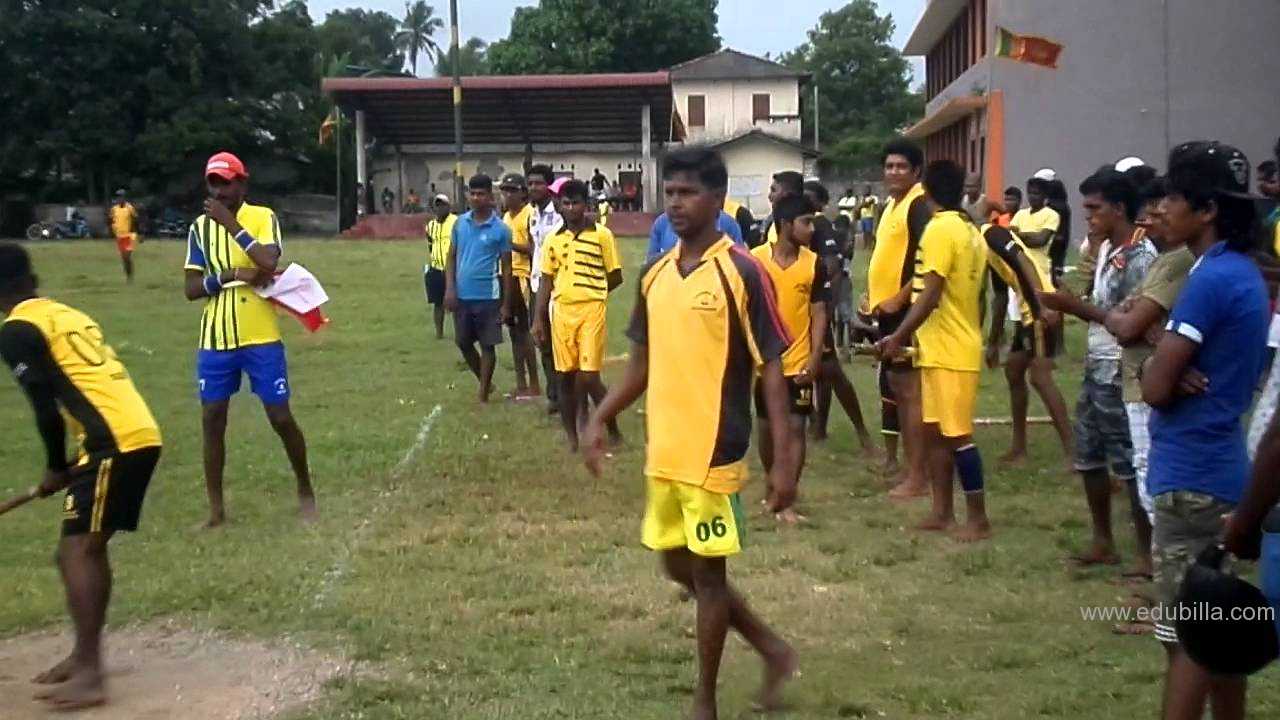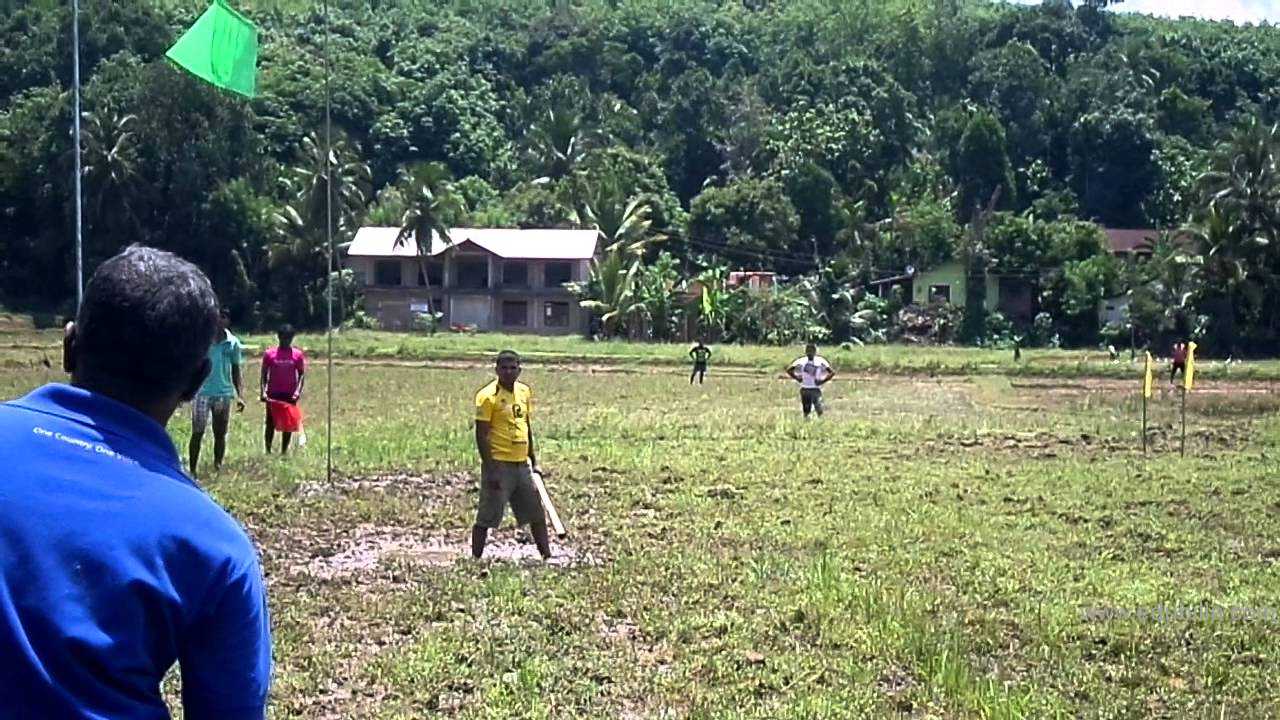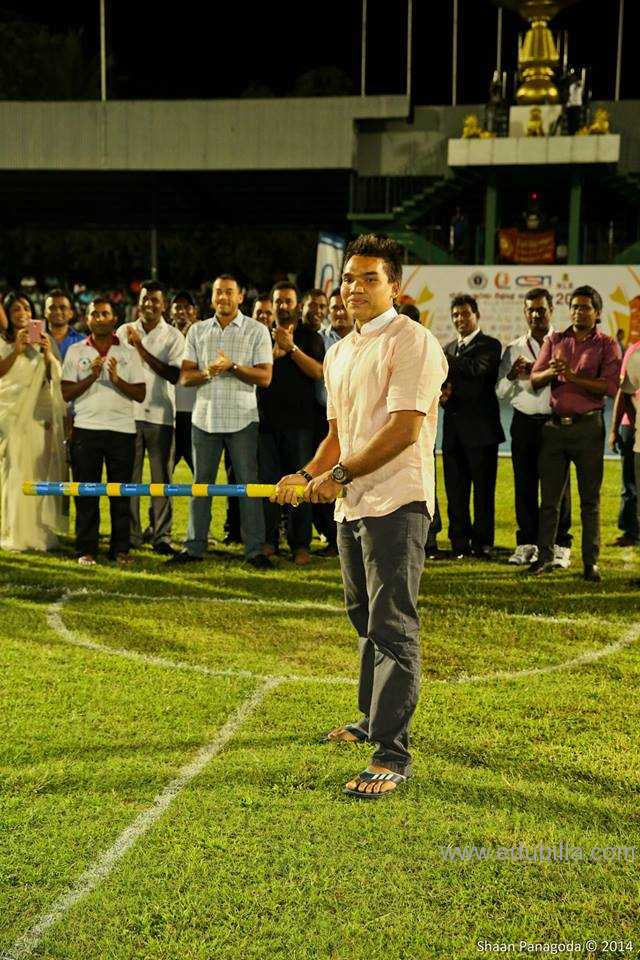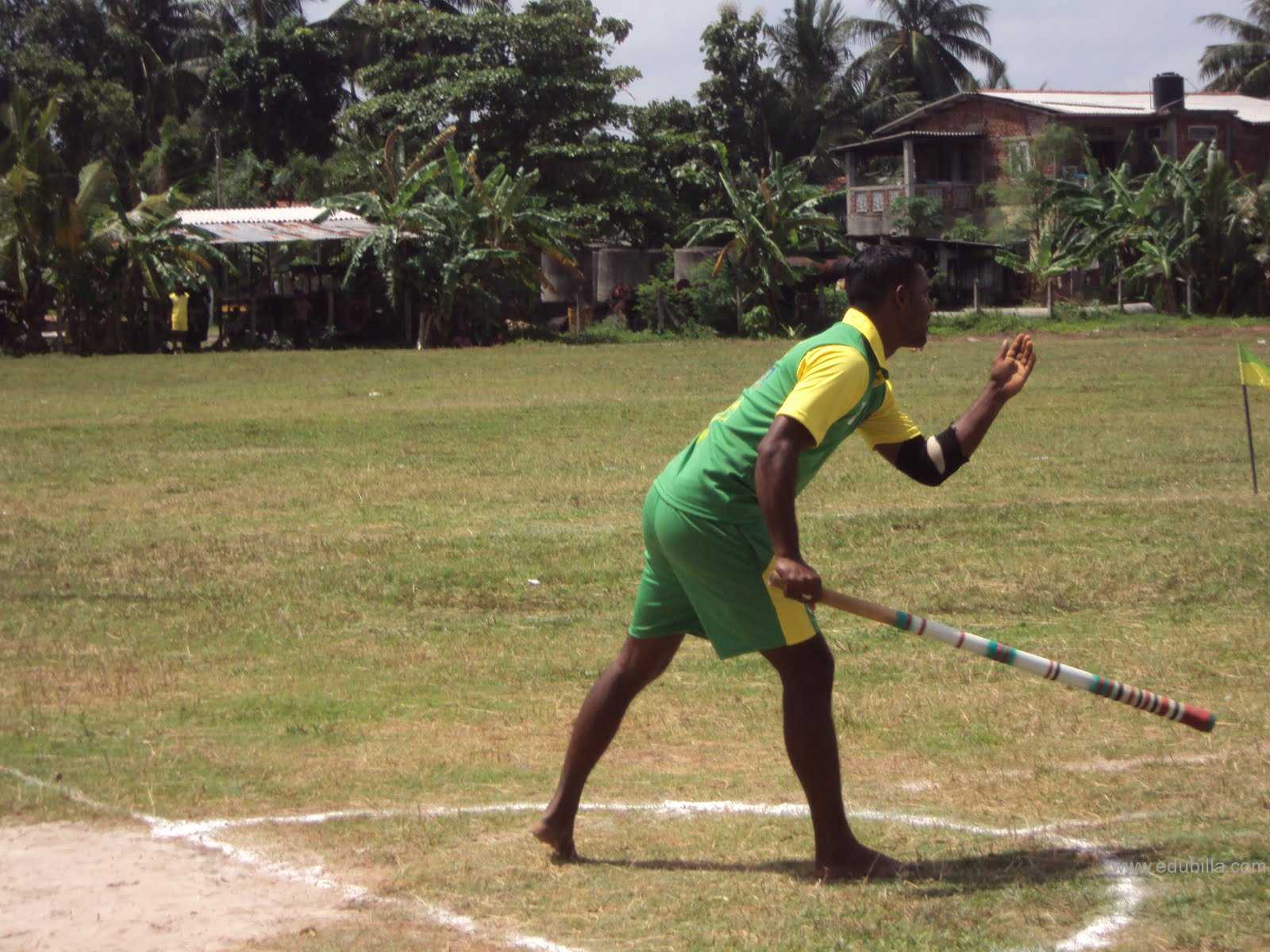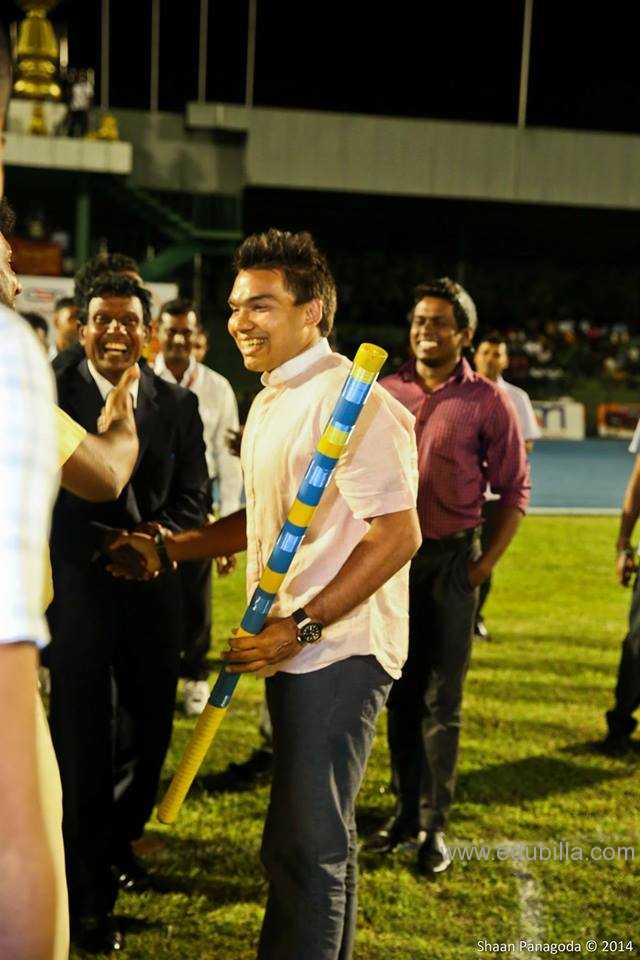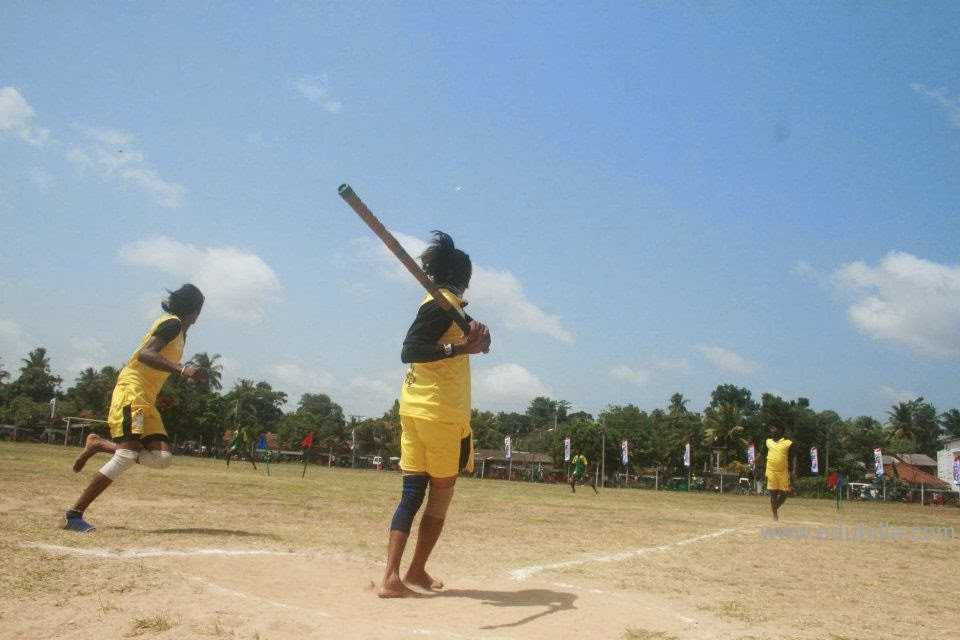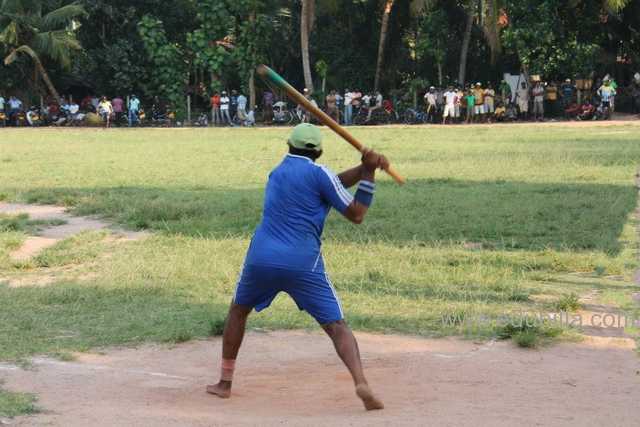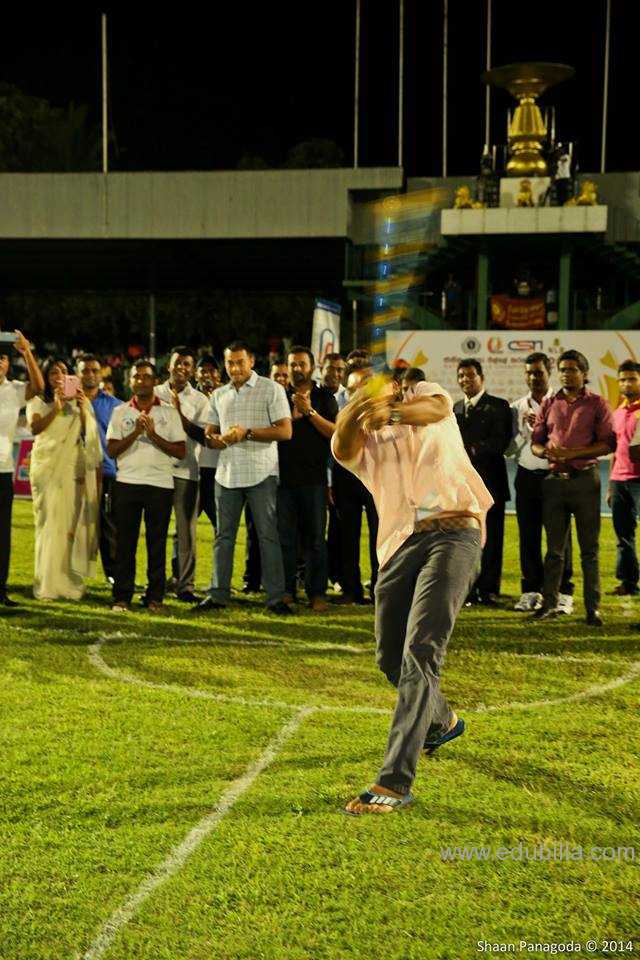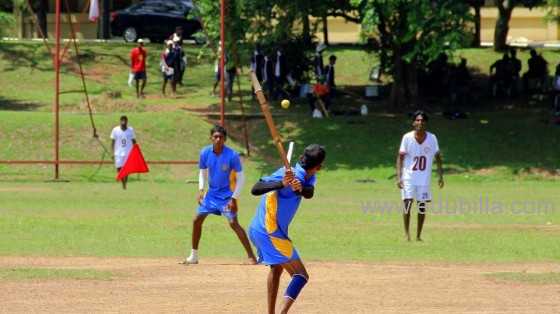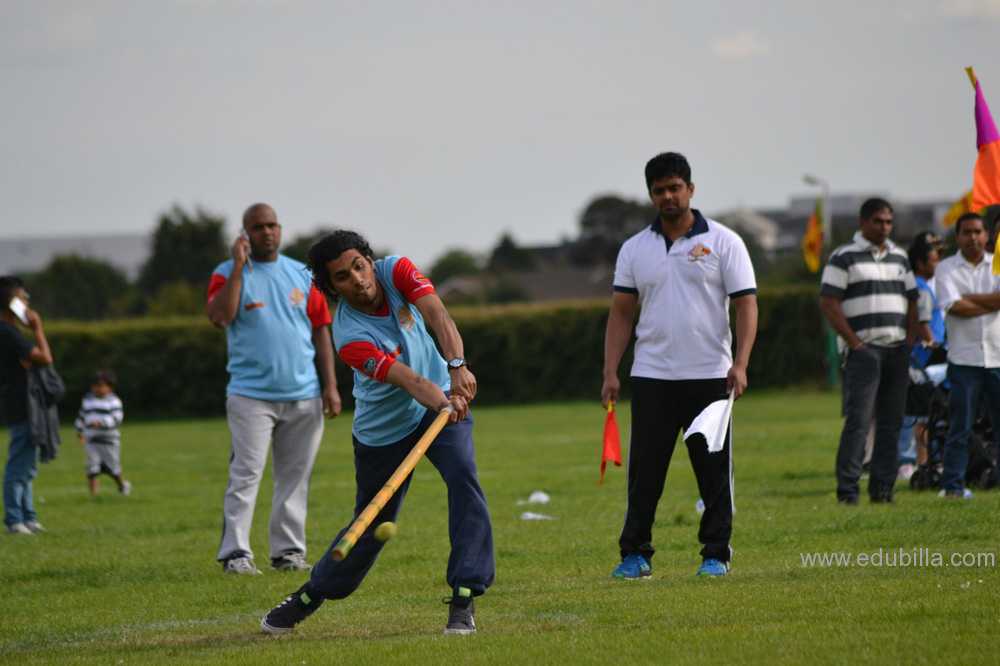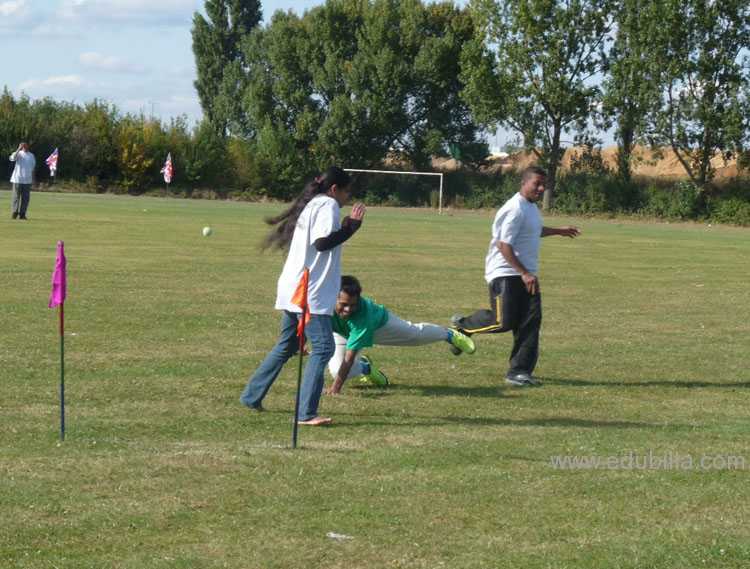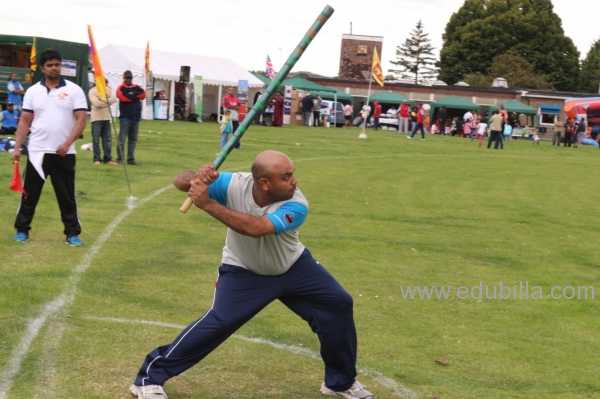
Overview Of Elle (sport)
Sport of Sri Lanka Elle bat and ball game.Usually, in ‘Elle’ the hitter is given three chances to hit the ball. The hitter after hitting the ball with the bamboo stick has to complete a round (a run) which includes about four possible ‘stoppings.’distance of stoppings 55 meter each. If the hitter’s stroke is caught by the fielding side, the hitter gets out. Then, if the fielding side is able to hit the hitter with the ball while he/she is in the course of before completing a run, then also the hitter gets out. The hitter can stop only at one of the three ‘stoppings’ in the round paving the way for another member of his/her team to come and become the hitter. The side that gets the highest number of (complete) runs wins the match.
Popularity:
At the beginning of the 20th century, Elle, was the most popular sports discipline in the coastal belt of Western and North Western Provinces.Many Elle clubs sprang up in these areas. It became a very competitive game and there were many Elle matches played during the weekends. It was popularly known as the "Poor Man's Game".Lorry loads of keen players and spectators flock to see their Teams in action. It was always a healthy and friendly competition. Sometimes very rarely they erupt.
Play:
(1) In a match where the Winners and losers are to be found, the maximum number of Players to a team is Sixteen (16), and minimum being Twelve (12). The lesser number of players in a team does not make the number of players to be restricted for the same number in the opposing team. The balance players in a team could be added before the commencement of the third innings.
(2) Striking or fielding could be decided upon on the toss of a coin
Game Rules
Elle Ground:
The playing area should be without obstructions especially to the running area. It should have the identical distance to the front and the two sides. The Playing Area should be marked with a line of Three (3) Centimeters in breadth leaving at least Five (5) meters to the back of the striking spot.
Rules and Regulation:
(1) The back of the field is limited by the two post erected for OUT and the OUT line in between them.
(2) Lands less than the players height and which are quiet are decided as Ground. All clothes worn by Players are treated as body.
(3) Touching of OUT Posts or posts at Runners’ Rest should not be a reason for removing them. A mistake which was going to happen by taking one step in a Runners’ rest can be rectified. Raising one leg when stopping is not considered as wrong
(4) When Striking a ball the striking Bat getting thrown out from the hands or running by taking Bat in hand is no reason for a OUT. The Striker should at all times prevent this type of things happening. The Ball which strikes the Bat and going forward after hitting the OUT line, hitting a player’s body and getting back or the Ball hitting the OUT posts and moving forward or back, are all not reasons for a OUT.
(5) Striking a Ball after it falls down or touch the hand are not considered as right Strikes.
(6) Stopping at Runners’ rest without running when running has to be continued, leaving the Runners’ rest and refusal to run are reasons for a OUT.
(7) A mistake which was going to happen at the Stopping Point and at the point of completing the Circle can be corrected.
(8) Both Teams shall use common Balls. Heating the Balls and colouring them are prohibited.
(9) It is no reason for an OUT keeping a part of the back leg on the Runners’ Rest line and the front part of the leg on the line of the semi circle.
(10)All the players in the fielding Team should refrain from blocking the players when running and hitting them very hard from the Ball. At the same time batting Team players without staying in their proper places should not block the fielding team . When running if a player hits a person in the fielding Team and falls down , the fielding player should not hit him with the Ball.
(11)Changing of any decision given by mistake or a decision given for hitting the body of the referee remains with the judging Board.
(12)Before the commencement of the third innings the named extra players can be included by informing the Chief Referee. Those players who have left cannot come again. In the event there is an accident changing of players and including of players can be done.
(13)If the Organizers so desire they can restrict the first competition to one inning, time of an inning to 35 minutes and the number of Balls to 40.
(14)When playing is stopped temporarily if the runners have started to run from the Runners’ Rest, such runners should be sent back to the original point.
(15)When a player is on the Runners’ Rest he could accord his wishes change the side. On this occasion hitting from Ball should not be done.
(16)It cannot be considered as a correct Stop at the Runners’ Rest if the legs of the player drags forward when trying to stop at the Runners’ Rest or raising one leg.
(17)If anything is done by the batting Team in violation of the set rules the Chief Referee has the right to treat as an OUT or depriving of marks. If this happens from the Fielding Team the Chief Referee has the right to treat as a not OUT or to give marks.
(18)All players stay five meters behind the striking Point, except the Striker and the Assistant Runner.
(19)A Team found fault of putting players against the set Rules without the permission of the Chief Referee or committed an offence regarding use of Balls shall be considered as defeated.
(20)When a Player is OUT and the Ball “Dead” permission should be given to change the person sending the Ball.
(21) it shall not be a reasons for a OUT if when the Striker hits from the semi-circle the fingers of the front foot are on the semi-circle
(22)It shall be a reason for loss of marks in the event the assistant runner starts running before the ball is served.
(23)All Team members shall ensure that they are attired in a similar dress along with numbers printed on them. Players can wear short and long trousers , shirts with long sleeves, and also wear shoes with socks. It is prohibited to wear shoes with iron nails.
(24)Those players not maintaining discipline and violating rules of the Game can be warned and can be taken out of the playing field after showing yellow and red Cards. No players are allowed to be substituted in place of those players removed.
(25)Balls going up after striking people or animals are not considered
Equipments Need For Elle (sport)
Equipment used in the playing area Two posts ten (10) meters in height similar to a Bamboo Tree, six posts (2) centimeters in breadth and 1 Meter in height and eight flags to be tied to the end of the posts. (The height of posts from ground level should be 1 meter)
Elle Bat:
The ELLE bat should be made out from well seasoned bamboo and the length and breadth of the Bat can be in accordance with the requirements of the Striker or the player. Its circumference should not be changed under any circumstances. However, the Elle Bat could be bound with material without using any metal in order to protect it from breaking or damaging.
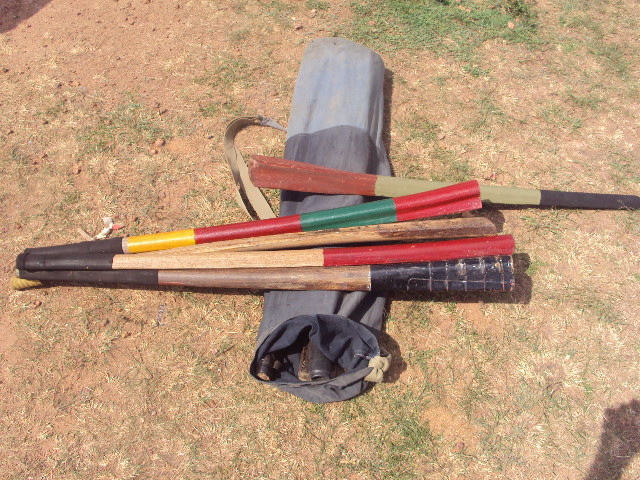
Elle Ball:
Until such time a special ball is specifically made for ELLE Tennis balls may be used. The fur on the ball could be removed/shaved before use but removing of fur to make the rubber visible is strictly prohibited. A rubber ball or another light ball could be used instead of a Tennis Ball but it is of paramount importance that the ball used should be common to both teams.
History Of Elle (sport)
- It is not clear as to when, where or by whom, game Elle was introduced. Even though one can not find definitive sources on the origin of the sport, there is evidence to suggest that the game had been played before the dawn of 20th century.
- A team photograph of an Elle team called ‘Hendala Greyhounds’ , which dates back to 1911, depicting the team members after a game of Elle, had been published. This indicates that the game may have been played by numerous organized groups from diverse areas.
- The fact that the players in the said photograph were clad in European attire instead of sportswear indicates that the game might have been popular among the middle class population of the era. The players are seen wearing neckties and suit coats. Existence of Elle in and around Hendala area as far back as 1900, is not accidental. It suggests that the game was an integral part of the lives of the people of such areas. It was deeply ingrained in their society which treated it as a powerful, attractive sport and it was often played in a festive setting. It is worthwhile to find out as to how Elle acquired this festive status. In predominantly Christian areas, people used to organize a game of Elle to coincide with the church feast which was invariably held on a Sunday. The venue was the church premises or the adjoining church property. Games would start after the religious activities and it brought much delight to the villagers. Every village could boast of its Elle team which was a fair blend of youth and adults of the brawnier variety. This village team is pitted against a team from a neighboring village at such an occasion. At the end of the game the visitors were treated to a meal as well as soft drinks and tea. This is a custom which was deeply rooted in the village neighborhoods.
- The sport of Elle and the players do carry a unique identity. Even after gaining independence from the British in 1948, Sri Lankan society could not break the shackles of colonial influence completely for a considerable period of time. Even Elle could not rid itself from this influence and the remnants of the colonial past could be seen mainly in the symbolic representations. The names of Elle teams during the fifth decade ( 1940s ) provide ample evidence to such symbolism. One could recall names such as ‘young boys’, ‘happy boys’ , ‘super sixteen ‘ , ‘young eagles ‘ , ‘red arrow’ , ‘red heart’, ‘jolly boys’, ‘red eagles’, ‘blue star ‘ and ‘young star’ as examples.
- Even the modern day Elle teams adhere to various naming conventions. Some carry names of ancient kings. Others identify themselves with catholic saints, nature, and virtues. There are teams name themselves after the village from which they hail or unique attributes of the area.
- Sri Vijaya of Colombo Central, Gamini of Udammita , Mahasen of Kudakahapola, Vijaya of, Peellawatta Gemunu of Batuwatta, Sri weera Gamini of Yakkaduwa, Wickrama of Miriswatta, Parakrama of Katunayaka are the names and places of origin of those teams that carry names of ancient Kings.
- St. Sebastian’s of Kandana, St Jude of Mahabage, St. Nicolai of Bopitiya , St Maria of Andiambalama, St. Xavier’s of Katana, St Anthony’s Peralanda, Fatima of Mudukatuwa, St. Ana of Boralessa are just a few of many clubs that bear the names of catholic saints.
- Some teams name themselves after celestial objects or national symbols. Nagena tharu ( rising stars ) of Narangodapaluwa, Ran tharu (golden stars ) of Morakkuliya, Dilena Tharu ( shining stars ) of Modara, Sandatharu ( moon and stars ) of Boralessa, Ridee Tharu ( Silver Stars ) of Jae la, Sinha Tharu ( Lion stars ) of Kerangapokuna, Hiru Ras ( Rays of the Sun ) of Bolla, Chandrika ( Satellite ) of Mabima, Sikura Tharu ( Star of Venus ) of Ragama, Nawaka Tharu ( Novice Stars ) of Henatiyana. is a reperesentative sample of such names.
- Another group of team names consist of good qualities or virtues. Examples are Muditha ( happiness ) of Kerawalapitiya, Eksath ( united ) of Hendala, Samagi ( Harmony, Unity ) of Welisara, Ekamuthu (unity ) of Palugahawela, Wasana (felicity) of Ganemulla, JayaShrie (Hail) of Kopiyawatta, Nirmala (immaculate) of Kimbulapitiya, and Mangala (prosperity, lucky) of Ekala.
- Yet another group have named themselves according to the geographical characteristics of their area. Sayuru Thera ( Beachfront ), Sagara ( ocean ), Sagara Tharu ( Stars of the Ocean ), Sayuru Rala ( Tide of the Ocean ), Sayuru Tharu ( Stars of the Ocean ) of Kepumgoda, Hendala , Thalahena, Usweltakeiyawa, Palliyawatta respectively do remind us of the coastal areas in which these villages are situated. You can also find the River Kelani the broadest river of the Island, featuring prominently in team names such as Kalyani ( Kelani river ) of Peliyagoda, or Kelani Nadi ( River Kelani ) of Kittampahuwa.
- Time of Day is an yet another theme on which teams are named. Aruna ( Dawn ) of Totalanga, Udaya ( Morning ) of Sedawatta, Sandya ( Evening ) of Totalanga, Arunodaya ( Dawn ) of Sedawatta are the prominent clubs in that category.
- Elle is a game which could be played by the entire cross section of population, Men, women, children, adults, young ones, old folk : Everyone can take part with no restrictions. Elle is simple, easy, less demanding and uncomplicated.
- In casual play the ball is formed by various fruits of many indigenous trees. Sometimes they use a dried fruit of Wel Kaduru ( Cerbera manghas ) as the ball. Another indigenous fruit Jambola is also used in its raw form as the ball. A seasoned fruit of local orange or Dodam is also a good alternative.Some of them use a crumpled piece of hard paper. A ball formed by strings of dried rubber called ‘ottapalu’ serves well as a durable form of an Elle ball. The striker is formed by a piece of bamboo, a piece of a mammoty handle, a handle of an axe or a stalk of a coconut leaf. These ingredients are abundant in the countryside.
- Flat Coconut plantations with its towering coconut trees, barren paddy lands, Fields right after the harvest, Sandy coastal lands, and unutilized land provide ample space that serve the purpose of stadia for the sport of Elle.
- Each team consists of 20 players of which four are reserves. Playing team comprises 16 players. The minimum number of players in a team is 12. Be it three or four players, Be it 20 or more, Elle provides the opportunity of participating in a game that could be played in a friendly manner devoid of ill will. The game which relied on humble roots with such simple equipment has evolved during the last 10 -12 decades. Now it on the verge of gaining international recognition.
- Today a properly standardized ball, bats formed with exquisite craftsmanship using finest local Bamboo, enjoy pride of place in the Elle arena. Official attire of the players, Playing field with marked boundaries, board of umpires clad in proper clothing in keeping with the international code of administration, score sheets that record each and every minute detail of a game, are the features one can not ignore in the present game.
- A quick look at the technical sophistication, skill, technique and the quality of modern day Elle would make the Elle fan and others wonder as to whether this really is the game of Elle that existed a century ago. That honor should be shared by everyone who toiled and sacrificed, perspired and shed tears for the sport they loved so much. Sport of Sri Lanka Elle it was pastime game and Sri Lanka National Sport in year between 1970-1990.
Origin Of Elle (sport)
It is not clear as to when, where or by whom, game Elle was introduced. Even though one cannot find definitive sources on the origin of the sport, there is evidence to suggest that the game had been played before the dawn of 20th century.
Sport of Sri Lanka Elle it was pastime game more than thousands of years ago.and Sri Lanka national sport in year between 1970 -1990.which was introduced by our ancestors in Sri Lanka more Than two thousand years ago.But now it was operated few district such as Colombo,Gampaha and Putthalam.All elle players' and supporters in these District dedicated their time for Elle.
First Materials:
Frist they played using sticks and Sometimes they use a dried fruit of Wel Kaduru ( Cerbera manghas ) as the ball for their free time. The main task for poor Men’s earn a living but they have also had a past time game.when they have a leisure after they collected their harvest they gather near paddy field with their family and played this Game.
Growth of Elle:
All Villagers’ divided in to group two or three group and played it’s include men and women that was very interesting for all of them. Day by day it was improve little children also played like their parents. Near village team also participated One team won the game or defeated all of them deliver their entertain. Entire Villagers participated harmony and well manner. When they played exchange theirs views and ideas as well as delicious Food prepared by them. All villagers, neighbors and relatives contest against each other’s but no anyone harm for these hospitable poor villagers . These historical event expanded all over the country within few years as their past time game.
Governing Bodies
Association of Sri Lanka Elle
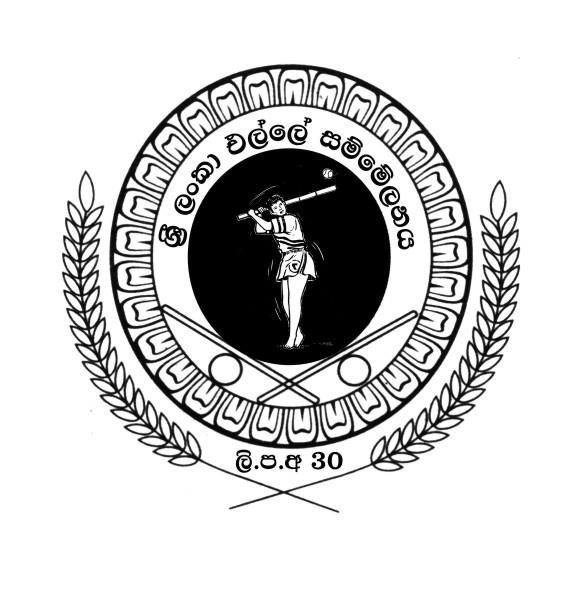
Awards Related To Elle (sport)
SriLankan Airlines’ Sports Council AGM
SriLankan Airlines, in view of encouraging and rewarding its employees who make the Airline proud at the island wide sports encounters, awarded colours to six athletes at SriLankan Airlines Sports Council Annual General Meeting held at the Colombo Hilton recently. The new office bearers for the coming year were also appointed at the AGM.
Sample Documents Of Elle (sport)
-Muhammad Ali


